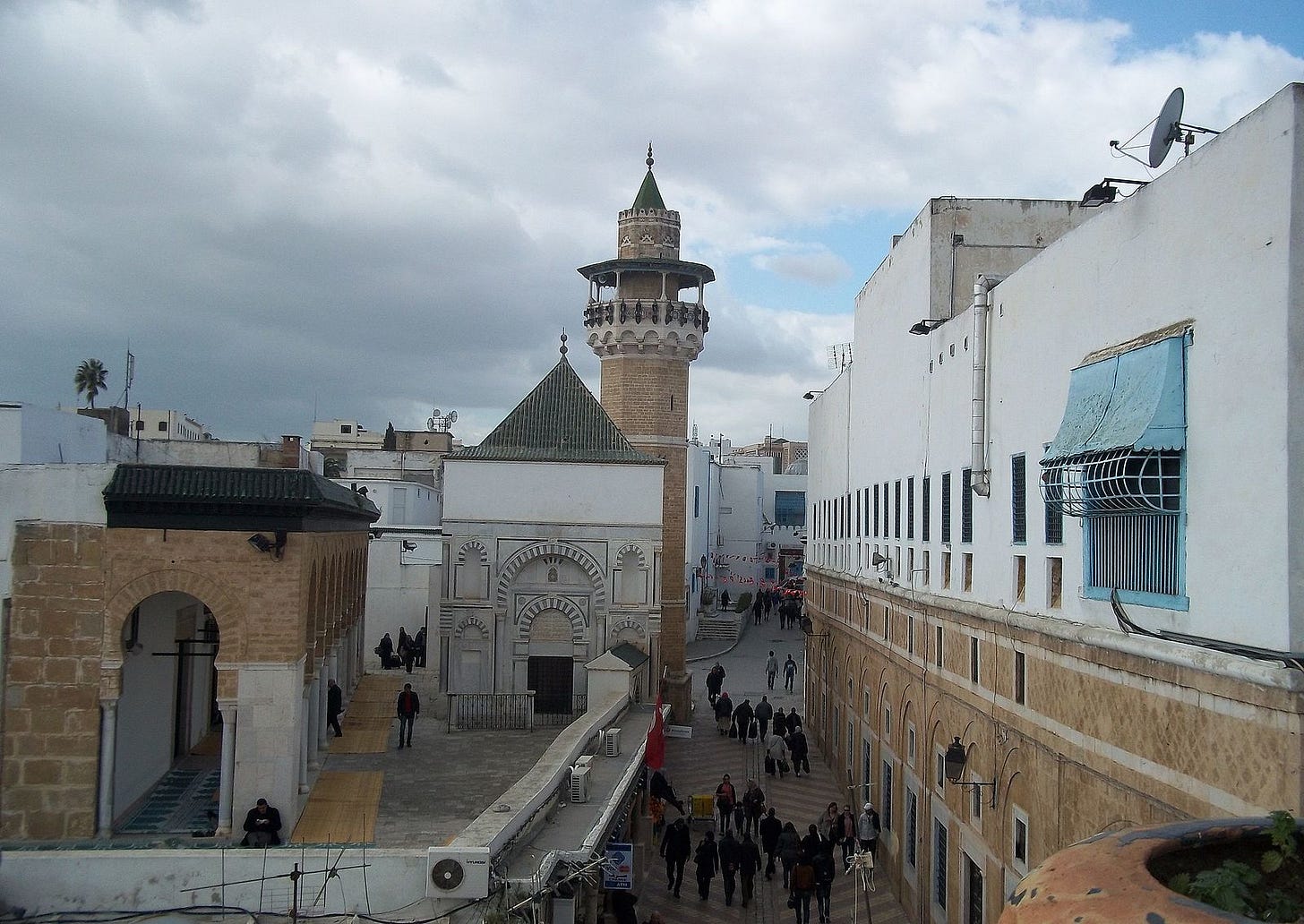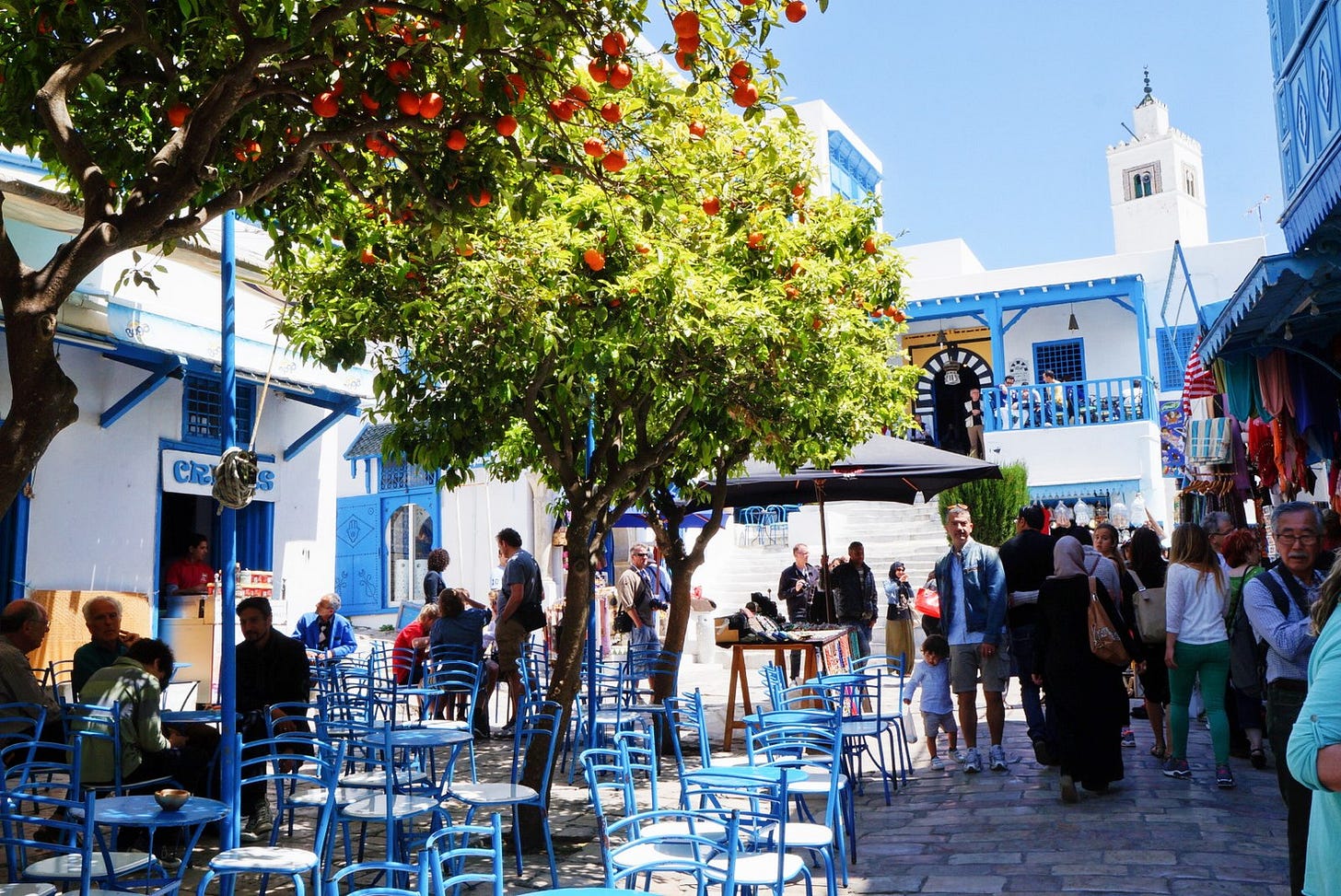Spirit of Place: The Quirky Charms of Old Tunis
Most tourists are just passing through, but it's worth stopping to explore.
For most Western visitors, Tunis is a stop en route to someplace else: The luxury hotels of Jerba, the coastal cities of Sousse, Sfax, and Monastir, or the beaches of the Cap Bon peninsula. Although handfuls of German and Italian tourists can be found strolling among the medieval markets of the old medina, or sipping espresso in the sidewalk cafes along the Avenue Habib Bourguiba, since the various gulf wars you rarely see an American or British face in the Tunisian capital. After all, Tunis was once the headquarters of the PLO and the Arab League, and anti-Western feeling here is strong despite the usual warm welcome to foreigners shown by its residents.
An American? Really! And what did I think of Saddam Hussein? The question was a taunt, to see how brave I thought I really was. Not so brave, actually, as I mumbled noncommittally about the complexities of the international situation.
Tunis is noisy, chaotic, and unpredictable. All the more reason, then, to appreciate those quirky charms the city does offer the visitor who hangs around more than a day.
Until the late 19th century, the city did not extend much beyond the confines of the medina. The marshes of the shallow Lake of Tunis extended to the Bab el Bahr, or Sea Gate, which still stands on the Place de la Victoire next to the British Embassy. When the French invaded 1881 and claimed Tunisia as their “protectorate,” they drained much of the marshland and extended the city to the east. Today the Ville Nouvelle, with its broad boulevards and Belle Epoque architecture, is the real center of Tunis, while the overcrowded medina is the haunt of more recent immigrants from throughout the Arab world.

It’s easy to get lost in the medina’s winding, narrow passageways, and most visitors stick to the two main streets, which begin at the Place de la Victoire: The Rue de la Kasbah, leading to the government buildings on the far side of the old town, and the Rue Jamaa Ezzitouna, which ends in front of the Great Mosque at the very center of the medina. Here I was accosted by a one-eyed Turkish perfumer, who led me through a maze of back streets and into a carpet shop, where we climbed several flights of stairs to a terrace with a sweeping view of the city. He refused my repeated offers to pay him, and seemed only mildly disappointed when I didn’t buy any perfume.
(All these years later I still regret that I did not. At the time, I was still infected with the arrogant and racist attitude of the tourist who thinks everyone in a “foreign” country is trying to take advantage of them.)
The Avenue Habib Bourguiba, named after the hero of Tunisia’s independence struggle and the nation’s first president, is the main artery of the Nouvelle Ville. Prioer to 1956, when France released the country from its beneficent “protection,” this wide boulevard was called the Avenue Jules Ferry, in honor of the 19th century statesman whose machinations helped capture Tunisia for the French. The avenue’s center meridian is lined with two rows of broad-leafed fig trees, and when the wind whips through the city—as it often does during the summer, when the parched Sahara desert gasps in lungfuls of humid air from the Mediterranean Sea—thousands of sparrows race along the treetops and raise a high-pitched cacophony.
Under the trees, the booths of the flower sellers are redolent with jasmine, and the kiosks sell newspapers from around the world. The Avenue Habib Bourguiba is the departure point for a number of excursions out of the city center. A train or bus ride through the western suburbs leads to the Bardo, the former palace of the beys, the civil administrators who ruled the city when Tunisia was in the grasp of the Ottoman Empire. The Bardo today is a spectacular museum. Its staggering collection of Roman mosaics covers most of the floors and walls, and the exhibition rooms are stuffed with statuary and other artifacts from the great cities of Roman Africa: Bulla Regia, Thuburbo Majus, Utica, and of course, Carthage.
Those who like their ruins relatively intact might find the remains of Carthage disappointing. The Romans didn’t leave much standing when they destroyed the Phoenician city in AD 146. But those who don’t mind exercising a little imagination, the trip by railroad out along the Gulf of Tunis is recommended. The remains of the Baths of Antonine and the Roman villas are well worth exploring, and as the afternoon fades you can always continue on to the cafes and restaurants of Sidi-bou-Said.
This clifftop village, a cluster of white houses with ornately trimmed blue doors, is so pretty that even the summer crowds of tourists can’t detract from its charm. The view across the gulf is magnificent, and as twilight draws a pink curtain across the water, the lights of Tunis seem to beckon you back into the arms of that chaotic city.

Note: This piece is adapted from one I published in the International Herald Tribune in 1993. I can’t remember now if I was on my way to the Tunisian island of Jerba on assignment for Islands magazine, or on the way back; but watch Spirit of Place for an upcoming piece about the island that some claim was the original Land of the Lotus Eaters.





